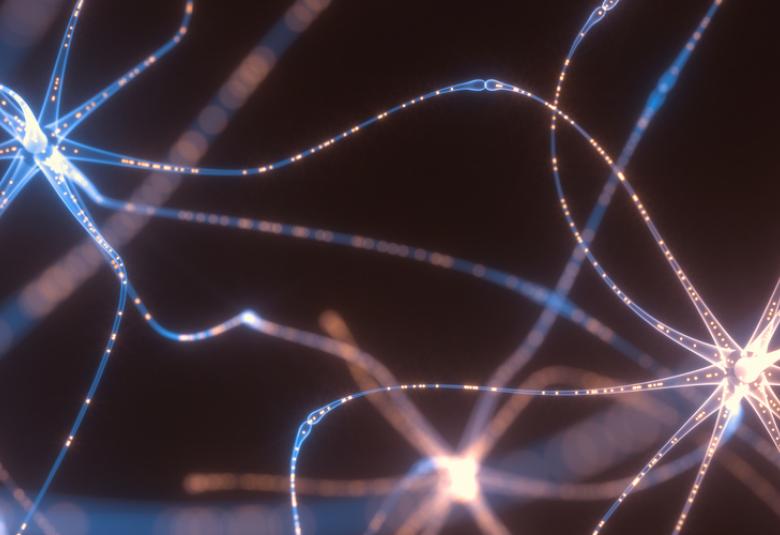A goal of precision psychiatry is to locate a patient along the continuum of the disease course, which may be achieved with a staging model of schizophrenia. Negative symptoms play a key role at the prodromal and residual stages, and represent a huge unmet need. The staging model and reclassification of primary and secondary negative symptoms may allow appropriate intervention. Elucidation of the dopaminergic pathways in the brain may facilitate targeted drug design. Blocking D3 receptors may enhance dopamine release and stimulate D1 receptors to improve negative symptoms. While partial agonism or antagonism at D2 receptors improves positive symptoms, partial agonism or antagonism at D3 receptors could improve negative symptoms of schizophrenia.
Negative symptoms play a key role at the prodromal and residual stages, and represent a huge unmet need
A staging model for schizophrenia
Locating a patient with schizophrenia along the continuum of the disease course is a goal of precision psychiatry said Professor Pierre Michel Llorca (University Clermont Auvergne, France). The staging model is a construct that defines clinical stage according to severity and functionality, and will identify factors associated with transition between stages and predictors of evolution and functioning.1
Schizophrenia is a progressively debilitating mental disorder. Negative symptoms of schizophrenia play a key role at different stages of the disease: the prodromal and residual phases dominated by negative and cognitive symptoms are still a huge area of unmet need.2,3 Negative symptoms are highly prevalent and associated with poor functional outcomes, impaired psychological well-being and poor quality of life among people with schizophrenia.4,5
The staging model has potential to improve the logic and timing of interventions in schizophrenia, provides a background for therapeutic guidelines, and may be used to design novel therapeutic interventions said Professor Llorca.1,6
Reclassifying negative symptoms in schizophrenia
The heterogeneity and complexity of negative symptoms has hindered their management in the past. Recent re-conceptualization, including the differentiation between primary and secondary negative symptoms, may contribute to overcoming these difficulties said Professor Silvana Galderisi (University of Campania, Italy).
Negative symptoms include five fundamental constructs: blunted affect, alogia, anhedonia, associality, and avolition, but do not include inattentiveness, poverty of content of speech, increased latency of response, blocking and inappropriate affect.7 A clear distinction between primary and secondary negative symptoms will aid better design of clinical trials and targeted drug design, concluded Professor Galderisi.
A clear distinction between primary and secondary negative symptoms will aid better design of clinical trials and targeted drug design
Unravelling the dopamine thread in the schizophrenia tapestry
Dopamine plays a pivotal role in schizophrenia: too much dopamine in the mesolimbic pathway leads to positive symptoms, while too little dopamine in the mesocortical pathway leads to negative/cognitive symptoms.
In an eloquent dissection of the neurological pathways underlying schizophrenia, Professor Stephen Stahl (University of California, San Diego, USA), sought to elucidate the mechanisms by which an antipsychotic drug could simultaneously block too much dopamine in the mesolimbic pathway and enhance too little dopamine in the mesocortical pathway to normalize the problematic symptoms of schizophrenia.
Differentiating dopamine receptor effects
The prefrontal cortex has predominantly D1 receptors (that stimulate neurotransmitter release) and few D2 and D3 receptors or dopamine transporters. D2 and D3 receptors function both as presynaptic autoreceptors (to inhibit dopamine release and decrease dopamine synthesis) and as postsynaptic receptors (to inhibit neurotransmitter release).
Blocking D3 presynaptic receptors may enhance dopamine release in mesocortical neurons and stimulate postsynaptic D1 receptors to improve negative symptoms
Blocking D2 presynaptic receptors may enhance dopamine release in mesolimbic neurons but will be counteracted by simultaneous blockade of D2 postsynaptic receptors. Postsynaptic mesolimbic D2 receptors regulate positive symptoms whereas mesocortical D1 receptors mediate negative symptoms.8,9
Blocking D3 presynaptic receptors may enhance dopamine release in mesocortical neurons and stimulate postsynaptic D1 receptors to improve negative symptoms, but will not be counteracted by simultaneously blocking postsynaptic D2 receptors.8,9
Partial agonism or antagonism at D2 receptors improves positive symptoms whereas partial agonism and antagonism at D3 receptors could improve negative symptoms of schizophrenia
Thus, simultaneous blockade of D2 and D3 receptors could result in net blockade of D2 receptors in mesolimbic pathway and net stimulation of D1 receptors in mesocortical pathway. Partial agonism or antagonism at D2 receptors improves positive symptoms whereas partial agonism or antagonism at D3 receptors could improve negative symptoms of schizophrenia, Professor Stahl explained
Educational financial support for this session was provided by Recordati and Gedeon Richter Plc.




